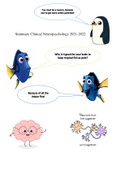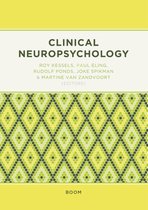Summary
Full literature summary of 'Clinical Neuropsychology'
- Course
- Institution
- Book
Complete summary of the book 'Clinical Neuropsychology' by Roy Kessels et al. Includes 27 chapters, ranging from basic diagnostics to sensory modalities and from traumatic brain injury (TBI) to psychopathy. Used for the course 'Clinical Neuropsychology' of Leiden University.
[Show more]




